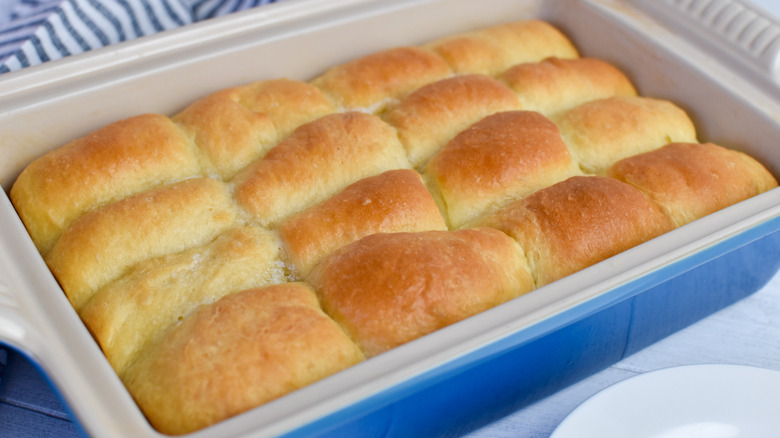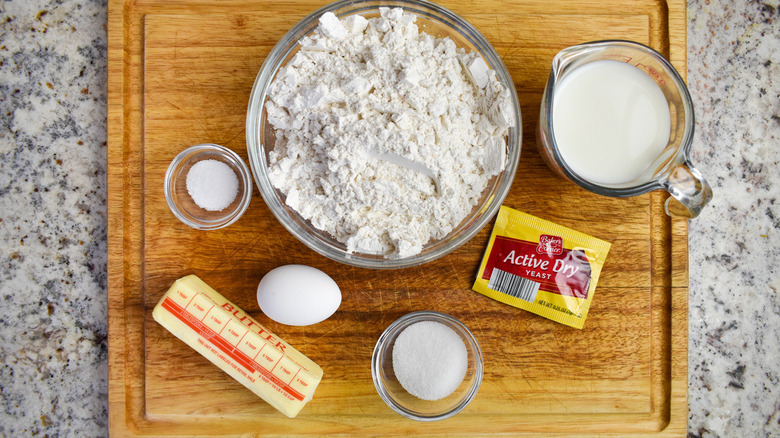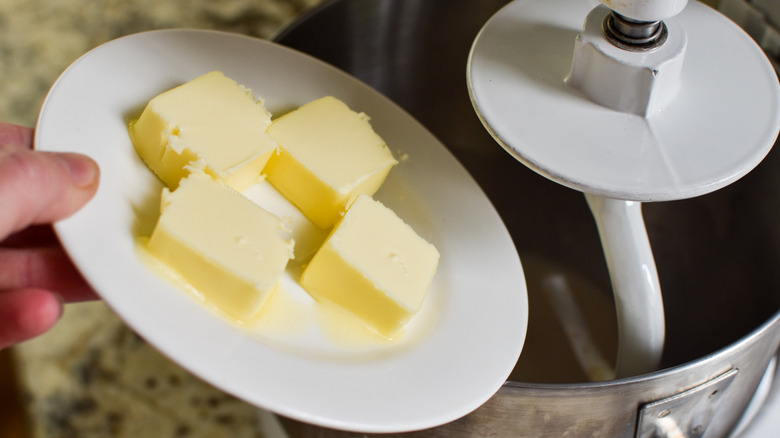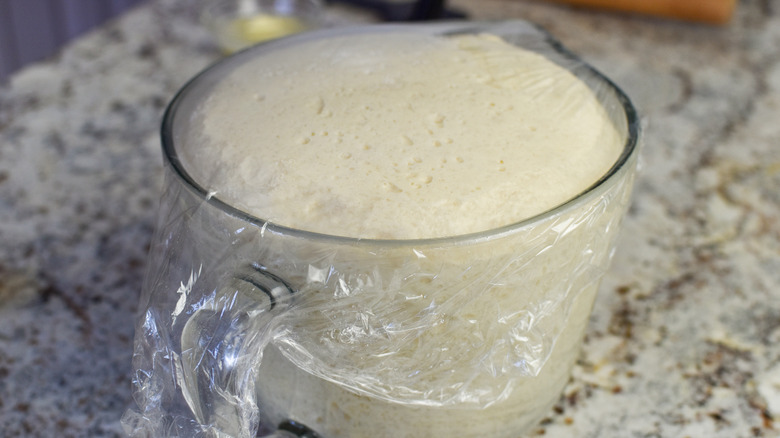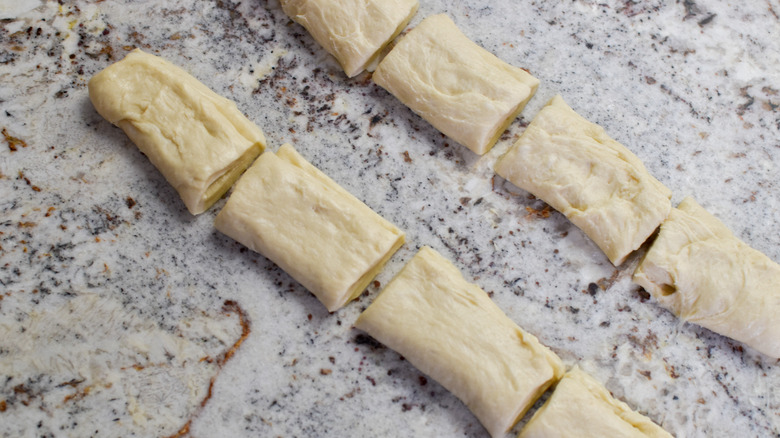Parker House Rolls Recipe
Let's be clear about three things right from the start: yes, these rolls take a lot of steps and involve a fair amount of active work. But no, they're not that complicated, just quite hands-on. And third, yes, without a doubt, they are more than worth the work! This recipe, put together by chef and recipe designer Stephanie Rapone of Pantry to Plate Meals, was inspired by rolls that have long been served by the storied Parker House Hotel, a fixture of downtown Boston, MA since 1955. "The original recipe is from the Parker House hotel in Boston," Rapone explains. "I have stayed there several times...so I thought it would be fun to learn how to make these rolls."
And even if you don't care much about hotels, you'll care greatly for these delightful buttery rolls, an American classic right up there with apple pie or a turkey dinner. Both of which would go great with these rolls, come to think of it. "These are really classic for any big holiday — with a ham at Easter, a turkey at Thanksgiving, and so on," says Rapone. "I also love them alongside a simple roast chicken on the weekend." Needless to say, these rolls pair pretty well with just about any meal!
Gather your ingredients for Parker House rolls
It doesn't take much to make these amazing rolls, it really is all in the handling. All you'll need, in fact, is a cup of milk (whole milk is recommended), some water, some sugar, some active dry yeast, lots of unsalted butter (the real star here), an egg, plenty of flour, and some salt.
Prepare your dough
At least two hours before making the rolls (and preferably even overnight), remove the butter from the fridge and leave it out, covered, so it can come to room temperature and soften fully. Shortly before you get baking, remove the egg from the fridge so it can start to come to room temperature.
Now let's start! Add the milk to a microwave-safe bowl or cup, then heat it in the microwave in 15 to 20 second increments, until the temperature reaches 100 to 110 F. Then add the warm milk and water to the bowl of a stand mixer, fitted with a dough hook, and add the sugar and yeast. Let this mixture bloom for 10 minutes.
After 10 minutes, add 4 tablespoons of softened butter and the egg, then turn the mixer on to combine everything. Now turn the mixer off and add the flour and salt ("I recommend weighing the flour for the truest measurement," Rapone says), then run the mixer on low until the dough starts to come together, then increase its speed to medium and knead for six or seven minutes, until the dough is one ball and the sides of the mixing bowl are mostly clean.
Let the dough rise
Next, using about ½ tablespoon of softened butter, grease the inside of an 8-cup glass measuring cup or a medium-large bowl.
Now dust a clean surface, then dump the dough from the mixer onto the floured surface and knead it into a smooth ball. Place the dough in the greased cup/bowl and cover it with plastic wrap. Place the covered dough in a warm place (at least 72 F) and allow it to rise for about two hours, or until it has doubled in size. "Just be patient with the yeast blooming and the rise times and they will be great," says Rapone.
Once the dough has doubled in size, lightly grease your work surface and hands with about ½ tablespoon of butter, then punch the dough down and pour it onto your greased surface. Divide the dough in half, and set half aside and cover it with a towel as you get to work on the first portion.
Form the rolls, then bake and enjoy
OK, here comes the super hands-on work! Microwave 3 tablespoons of butter for 20 seconds on 50% power so it is very soft and just starting to melt. "It's OK if it melts completely, you just don't want it bubbly hot," Rapone says.
Brush a 9x13-inch baking pan with some of the butter, then roll that first half of the dough out into an 8x12-inch rectangle. Now cut that dough rectangle in half, so you have two 4x12-inch rectangles.
Brush these rectangles with the melted/partially melted butter, then fold one rectangle over length-wise, with the top fold slightly overlapping the bottom, then cut it in half (so now you have two 6-inch pieces), then in half again (so you have four 3-inch pieces). "I think how these rolls are formed — cut the dough in half, then in half again — makes getting even-sized and shaped rolls super easy," Rapone says. Place these rolls three-inch dough pieces in the greased pan, then repeat all of those with the rest of the dough. You should have 16 rolls arranged in the pan when done.
Gently push down on the rolls so they cover as much of the bottom of the pan as possible, then cover the pan with plastic wrap and allow the dough to rise for 45 minutes to one hour, until the rolls are all touching and puffy. After about 30 minutes of rise time, start to preheat the oven to 350 F. Now bake the rolls for 20 to 25 minutes, until they're deep golden brown, then remove them from oven and brush the rolls with the remaining butter. Let them set for 10 minutes, then pull apart and serve. See, hard work does pay off!
Parker House Rolls Recipe
These Parker House rolls are warm, buttery, and baked to golden perfection.
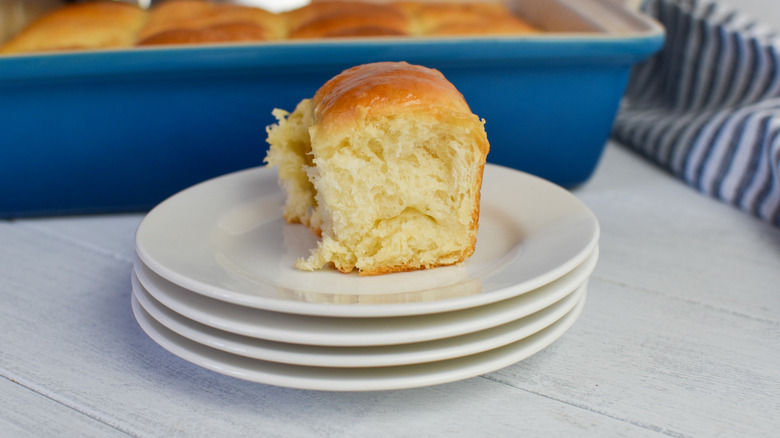
Ingredients
- 1 cup whole milk
- ¼ cup water
- 2 tablespoons sugar
- 1 package (¼ ounce) active dry yeast
- 8 tablespoons unsalted butter, divided
- 1 large egg
- 3 cups flour, plus more for dusting
- 1 teaspoon table salt
Directions
- At least 2 hours before making (preferably overnight), remove the butter from the fridge so it can come to room temperature and soften.
- Shortly before baking, remove the egg from the fridge so it can start to come to room temperature.
- Add the milk to a microwave-safe bowl or cup, then heat in the microwave in 15 to 20 second increments until the temperature reaches 100 to 110 F.
- Add the warm milk and water to the bowl of a stand mixer, fitted with a dough hook, and add the sugar and yeast. Bloom for 10 minutes.
- After 10 minutes, add 4 tablespoons of softened butter and the egg. Turn the mixer on to combine.
- Turn the mixer off and add the flour and salt, then run the mixer on low until the dough starts to come together, then increase speed to medium and knead for 6 to 7 minutes, until the dough is one ball and the sides of the mixing bowl are mostly clean.
- Using about ½ a tablespoon of softened butter, grease the inside of an 8-cup glass measuring cup or a medium-large bowl.
- Dust a clean surface with flour, then dump the dough from the mixer onto the floured surface and knead into a smooth ball. Place the dough in the greased cup/bowl and cover with plastic wrap, and put it in a warm place (at least 72 F) and allow it to rise for 1 ½ to 2 hours, or until it has doubled.
- Once the dough has doubled in size, lightly grease your work surface and hands with about a ½ tablespoon of butter, then punch the dough down and pour it onto your greased surface.
- Divide the dough in half, then set half aside and cover with a towel.
- Microwave 3 tablespoons of butter for 20 seconds on 50% power, so it is very soft and just starting to melt.
- Brush a 9x13-inch baking pan with some of the butter.
- Roll this half of the dough out into an 8x12-inch rectangle, then cut that dough rectangle in half, so you have two 4x12-inch rectangles.
- Brush these rectangles with the melted/partially melted butter, then fold one rectangle over length-wise with the top fold slightly overlapping the bottom, then cut it in half (so now you have two 6-inch pieces), then in half again (so you have four 3-inch pieces).
- Place these rolls in the greased pan, then repeat with the rest of the dough — you should have 16 rolls arranged in the pan.
- Gently push down on the rolls so they cover as much of the bottom of the pan as possible. Cover with plastic wrap and allow to rise for 45 minutes to 1 hour, until they are all touching and puffy, and after about 30 minutes of rise time, start to preheat the oven to 350 F.
- Bake the rolls for 20 to 25 minutes, until they're deep golden brown. Remove from oven and brush with the remaining butter. Let them set for 10 minutes, then pull apart and serve.
Nutrition
| Calories per Serving | 157 |
| Total Fat | 6.8 g |
| Saturated Fat | 4.1 g |
| Trans Fat | 0.2 g |
| Cholesterol | 28.4 mg |
| Total Carbohydrates | 20.4 g |
| Dietary Fiber | 0.8 g |
| Total Sugars | 2.4 g |
| Sodium | 127.0 mg |
| Protein | 3.5 g |
